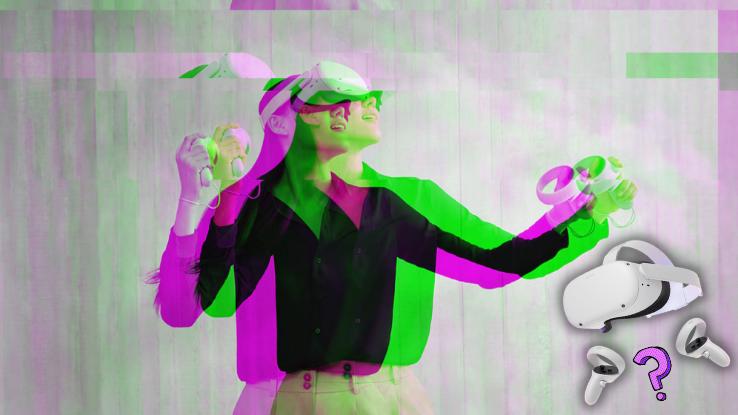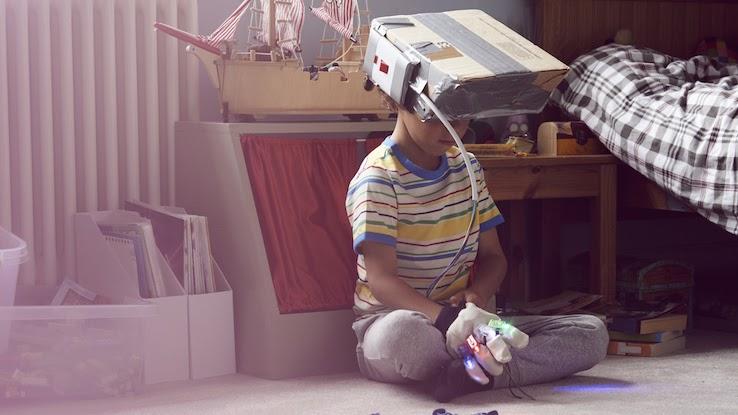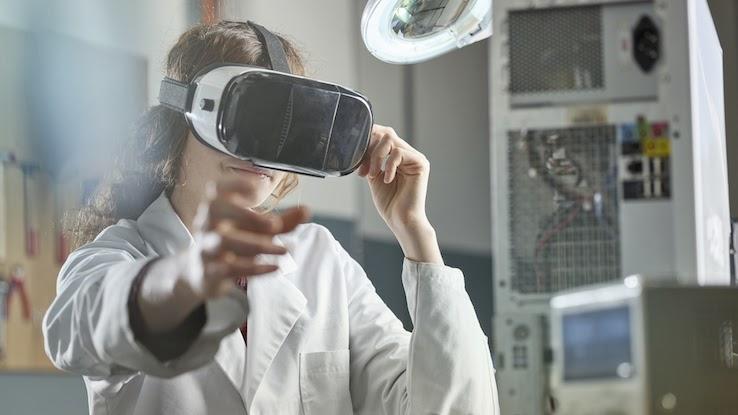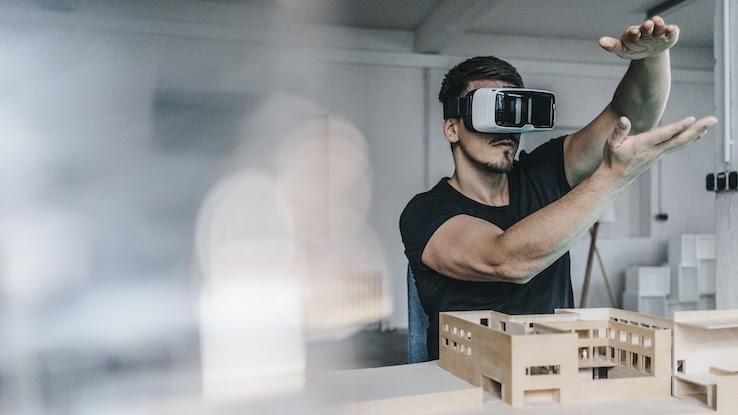Which Of The Following Is A Criteria For Vr Services?

Virtual reality (VR), which simulates experiences that are either similar to the real globe of entirely invented, has become increasingly popular over the recent years. Instead of being something fringe and almost sci-fi, the tech used has become more than widely available, allowing developers to use VR platforms in video game development — and beyond.
Every bit is the case with video games, VR platforms are at present existence leveraged by the likes of everyone from healthcare professionals to existent-manor agents because the simulation-creating tech allows them to create a better, more valuable patient, or customer, experience. While screens let us to peer into worlds, VR tech actually immerses us in 3-dimensional worlds.
Yes, it all sounds pretty high-tech, just yous tin can easily scoop up a VR headset at your local Best Buy if y'all're and then inclined. The merely problem? There are a lot of options out at that place — and a VR headset tin be quite the investment. So, if you're a beginner, is something like the ever-popular Oculus Quest two your best bet for taking that start step into VR experiences? Let'southward discover out.
The Origins of VR Platforms
Humankind'south involvement in entering invented worlds and virtual realities has existed for quite some time. In fact, explorations into virtual reality stretch further dorsum then you might remember — long before the efforts of mod-mean solar day video game companies, and fifty-fifty earlier we all became obsessed with The Matrix'south simulation.
In the 1930s, science fiction author Stanley Thou. Weinbaum was among the offset to predict the appearance of VR. InPygmalion's Spectacles, a story from 1935, the visionary wrote about goggles that immune the wearer to feel sensory, holographic worlds. The notion of VR would reoccur in other well-known sci-fi works, including Ray Bradbury'southward 1950 short story The Veldt, which tells the story of a family unit that lives an automatic (or "smart") domicile. 1 of the home'south wonders is the "nursery," a virtual reality room that creates reproductions of any place the family'due south children imagine.
Outside of fiction and sci-fi speculation, attempts at creating immersive, 3D worlds stretch back fifty-fifty farther. For example, panoramic paintings and murals of the 1800s sought to transport viewers into realistic scenes, albeit without other sensory or mechanically aided efforts. Only a existent spring forward came in 1838 with Charles Wheatstone's foray into stereoscopic photos.

"Wheatstone's research demonstrated that the brain processes the unlike two-dimensional images from each eye into a single object of iii dimensions," the Virtual Reality Society explains. "Viewing 2 adjacent stereoscopic images or photos through a stereoscope gave the user a sense of depth and immersion." This, of class, led to the development of the View-Master, which was patented in 1939 and gave rising to a kind of unique virtual tourism experience. The Virtual Reality Society also points out that Edward Link's "Link Trainer," a 1929 electromechanical flying simulator, likewise has ties to early on VR evolution, namely because information technology was meant to immerse would-be pilots into the experience of flight.
Some other huge leap forward came in the 1950s when cinematographer Morton Heilig created Sensorama, which, every bit the name implies, was meant to stimulate all of the senses, beyond just sight and sound. Past 1960, Heilig had also invented the then-called Telesphere Mask, the kickoff head-mounted display (HMD) ever created. Over the adjacent 30 years, companies, inventors and visionaries alike tried to create VR tech and experiences, leading to the development of more HMDs and flying sims. Notably, there were as well more unique developments, including MIT'due south Moving-picture show Map in 1977 — a system that let users explore a virtual Aspen, Colorado, not similar Google'southward Street View — and the Sayre Gloves in 1982, which, co-ordinate to the Virtual Reality Society were gloves "wired to a computer system and used optical sensors to find finger movement."
Of course, in these early days, VR tech wasn't all that accessible. Sure, the Sayre Gloves may sound a lot like PlayStation Move's motion wands or, yous know, HAPTX gloves, but even in the '70s and '80s VR and adjacent tech were used past the likes of NASA, non gamers. In 1993, that all changed — or, at the very least, video game company Sega hoped that would change. The company backside Sonic the Hedgehog released its own VR headset for the popular Sega Genesis video game console, but, in the wake of several development challenges and a steep cost-bespeak, the effort flopped. The Sega VR-1 and Nintendo'southward Virtual Boy, which came out over the next few years, didn't see much success either.
While the video game industry would pin slightly to motion control — call back Nintendo'south Wii — and other more mild VR experiences, folks in tech were still researching VR as a viable industry. In 2007, Google added the Street View ability to their Maps service, allowing users to (virtually) stand anywhere in the earth and view 360-caste images. Google seemed poised to be the leader in VR tech, merely the visitor's launch of both Google Drinking glass and Google Paper-thin came in the wake of a successful 2012 Kickstarter campaign. The campaign in question was an endeavor to fund Palmer Lucky's prototype headset, the Rift, and it raised nearly $2.5 one thousand thousand. Despite Sega and Nintendo'due south earlier failures, it became clear that VR had true commercial potential once again — so much and then that Facebook bought Lucky's Oculus technology in 2014. And that brings us dorsum to the Oculus Quest 2.
In 2010, Palmer Lucky created a kit VR headset, "Oculus Rift," which would go along to irrevocably change the VR landscape. Every bit mentioned above, Lucky would go on to rise over $2 million to fund his evolution process, and, in a relatively short amount of fourth dimension, his tech became the gold standard. In 2014, established tech giants entered the fray, realizing the commercial value of accessible, mainstream VR platforms. Facebook, of grade, purchased the Oculus tech from Lucky, but Google launched Paper-thin, and Sony announced that a VR component would be adult for the PlayStation 4 (PS4).

With the likes of Oculus and the HTC Vive leading the fashion, the VR smash began. Oculus launched its half-dome HMD in 2018, which immune users to experience a very wide field of view (140 degrees, to be exact), and, that same yr, introduced users to both Oculus Become and Oculus Quest. These HMDs ready the benchmark for standalone VR. In detail, Oculus Go offered an affordable option for users. Much similar gaming PCs, headsets were pricing more casual (or curious) would-be users out.
About recently, the Oculus Quest ii was released in October of 2020. The most avant-garde all-in-i VR system out in that location, Oculus Quest 2 provides an immersive experience for users and shows the capabilities of side by side-gen gaming, including full-body and hand tracking abilities. But is the Oculus Quest 2 the correct selection for y'all?
Which VR Platform Is Best for New Users?
Despite the COVID-19 pandemic, 2020 saw the global VR market valued at over $15 billion. Moreover, it's expected to grow at a rate of 18% until 2028. Right now, five major players dominate the market — Oculus, Sony, Samsung, Google and Lenovo Group. Each of these companies has created platforms and tech that are both immersive and entertaining.

So, which is best? That's kind of difficult to say outright. But when information technology comes to folks who are merely getting into VR, a few options do stand out:
- The Oculus Quest 2 has been said to be one of the all-time VR platforms on the market place. With improved optics, smoother software, and more precise controls, the Quest 2 is a real step in a higher place its predecessor. And, different other VR platforms, more welcoming and mainstream. While GamesRadar+ points that the bodily headset feels a bit cheap, the site's review also notes that "If you lot've been waiting to get into VR, just have been put off by the requirements of a super-powerful gaming PC, then let us tell you why the Oculus Quest 2 is the VR headset you demand in your life right now."
- The HP Reverb G2 has been known to offer the highest resolution quality for PC gamers. That power puts it a notch above the Oculus Quest 2, merely it's also articulate that the HMDs are intended for different audiences. Our communication? If you're already a PC gamer, you might prefer the HP Reverb G2 (and its specs).
- TheSony PlayStation VR is too dandy choice for newer VR users. It'due south an splendid option for video games and tin also exist used for a wide range of other VR activities. While a video game console-based headset isn't going to requite you the horsepower of a PC-based one, information technology's even so a bully pick for folks who already take a PlayStation iv (or 5) and want to test out VR.
Better, more accessible tech makes room for greater innovation, which ways that many companies are broadening — or poised to augment — their VR prospects. When choosing which VR platform is right for y'all, a lot of it boils downwards to how you intend to use the headset — as well every bit your gaming background — but it's clear that the Oculus Quest 2 is worth looking into for folks who are new to VR.
Different Means to Use VR Platforms
Equally new VR-related tech emerges, its use cases have diversified. All of that to say, VR has more applications than Minecraft VR or Beat Saber. In fact, many industries exterior of gaming have reasons to create more immersive experiences for their consumers.
For example, engineers in the machine industry accept been using VR to test the blueprint and structure of a vehicle during the concept phase in order to save coin on building out physical prototypes. Companies that focus on optometry, such as popular eyeglasses retailer Warby Parker, have harnessed the power of smartphone-based VR to let customers to try on frames from home. And, mayhap most excitingly, VR has been employed in the field of education, allowing students to take virtual field trips to museums — or even outer space.

But VR isn't confined to these popular HMDs nosotros're all scooping up. Desktop-based VR provides a virtual, 3D world without any positional tracking equipment or head-mounted displays, allowing users to take in a virtual world using loftier-resolution OLED or LCD monitors. Meanwhile, augmented reality (AR) blends users' digital content experience with their real-life surroundings, and mixed reality (MR) uses a combination of real and virtual worlds, allowing digital and concrete objects to exist and interact in real-time. Clearly, the potential for growth in the field of VR is nearly boundless. In fact, the only existent limitation might be one's lack of imagination.
Which Of The Following Is A Criteria For Vr Services?,
Source: https://www.ask.com/culture/oculus-quest-2-best-vr-platform?utm_content=params%3Ao%3D740004%26ad%3DdirN%26qo%3DserpIndex
Posted by: anayadoingunt.blogspot.com


0 Response to "Which Of The Following Is A Criteria For Vr Services?"
Post a Comment